Eco-Friendly Gardening Tips for Beginners
This article provides essential tips for novice gardeners looking to adopt eco-friendly practices. Discover sustainable methods that promote plant health while protecting the environment, ensuring a beautiful garden without harmful chemicals. Whether you’re looking to grow your own vegetables or create a vibrant flower garden, these tips will help you cultivate a space that’s not only gorgeous but also beneficial to our planet.
Sustainable gardening focuses on practices that maintain ecological balance. It’s about working with nature rather than against it. Imagine your garden as a mini-ecosystem where every plant, insect, and element plays a crucial role. By embracing sustainable methods, you can create a thriving garden that benefits both plants and the environment. This involves understanding the natural cycles of your local ecosystem, using resources wisely, and minimizing waste. When you garden sustainably, you’re not just growing plants; you’re contributing to the health of the planet.
Native plants are well-adapted to local climates and require less maintenance. By incorporating native species into your garden, you can enjoy a variety of benefits, including reduced water usage and enhanced biodiversity. These plants have evolved to thrive in your area, which means they need less fertilizer and water compared to non-native species. Plus, they’re often more resistant to local pests and diseases, making your gardening experience much easier.
Native plants support local wildlife and pollinators, contributing to a healthy ecosystem. They provide food and habitat for birds, bees, and butterflies, which are crucial for pollination. By choosing native plants, you can improve soil health and resilience against pests and diseases. Here are a few key benefits:
- Less Water Usage: Native plants require less irrigation, saving you time and resources.
- Enhanced Biodiversity: They attract a variety of wildlife, enriching your garden’s ecosystem.
- Soil Health: Native plants help maintain soil structure and fertility, promoting a balanced ecosystem.
Planting native flowers can attract bees, butterflies, and other beneficial insects. These pollinators are essential for the growth of many plants, including fruits and vegetables. To create a pollinator-friendly garden space, consider planting a variety of native flowering plants that bloom at different times throughout the growing season. This ensures a continuous supply of nectar and pollen for pollinators, helping them thrive.
Implementing water-saving strategies is crucial for sustainable gardening. Techniques such as rainwater harvesting and drip irrigation can minimize water waste while keeping your garden flourishing. Rain barrels are an excellent way to collect and store rainwater for later use, and drip irrigation systems deliver water directly to the roots of your plants, reducing evaporation and runoff.
Healthy soil is the foundation of a successful garden. It’s like the backbone of your gardening efforts. Without it, plants struggle to grow and thrive. Composting is a fantastic way to enrich your garden while reducing waste. By turning kitchen scraps and yard waste into nutrient-rich compost, you can improve soil structure, increase moisture retention, and provide essential nutrients to your plants. Plus, it’s an eco-friendly way to recycle organic materials!
Managing pests organically is essential for eco-friendly gardening. Discover natural pest control methods that protect your plants without the use of harmful chemicals. This approach not only safeguards your garden but also protects the surrounding environment. By using organic methods, you can maintain a healthy balance in your garden ecosystem.
Companion planting involves growing different plants together for mutual benefits. Certain plant combinations can deter pests and enhance growth, promoting a more resilient garden ecosystem. For example, planting marigolds alongside vegetables can repel harmful insects while attracting beneficial ones. It’s like having a natural pest control team right in your garden!
Utilizing natural substances like neem oil or garlic spray can effectively deter pests. These homemade solutions are safe for the environment and can protect your plants from unwanted visitors. Experimenting with various natural deterrents can help you find the best solution for your garden’s specific needs.
Transforming your garden into a wildlife habitat supports biodiversity. By designing spaces that attract birds, insects, and other wildlife, you enrich your garden’s ecosystem. A garden that welcomes wildlife is not only beautiful but also contributes to the health of the environment.
Adding birdhouses and feeders can invite various bird species to your garden. These feathered friends not only add life and color but also help control insect populations. Creating welcoming spaces that provide food and shelter for local birds can make your garden a sanctuary for wildlife.
Incorporating features like insect hotels can help beneficial insects thrive. These structures provide shelter for pollinators and other helpful species in your garden. By creating habitats that support these insects, you promote a balanced ecosystem that benefits your entire garden.
Adapting gardening practices to seasonal changes is key for eco-friendly gardening. Each season brings its own challenges and opportunities for growth. Understanding how different seasons affect plant growth allows you to implement the best practices throughout the year.
Spring is a crucial time for planting and preparing your garden. It’s like the beginning of a new adventure! Learn effective strategies for starting seeds and nurturing young plants during this vibrant season. Consider factors like soil temperature and moisture levels to ensure a successful start.
Preparing your garden for winter helps ensure its health for the next growing season. Discover fall maintenance tips, including mulching and soil amendment practices to protect your plants. By taking the time to prepare your garden in the fall, you set the stage for a flourishing garden come spring.
Q: What are the best native plants for my area?
A: Research local native plants or consult with a local nursery to find the best options for your specific climate and soil conditions.
Q: How can I attract more pollinators to my garden?
A: Plant a variety of native flowers that bloom at different times and avoid using pesticides.
Q: What are some easy composting methods for beginners?
A: Start with a simple compost bin in your backyard or use a compost tumbler for easy mixing.
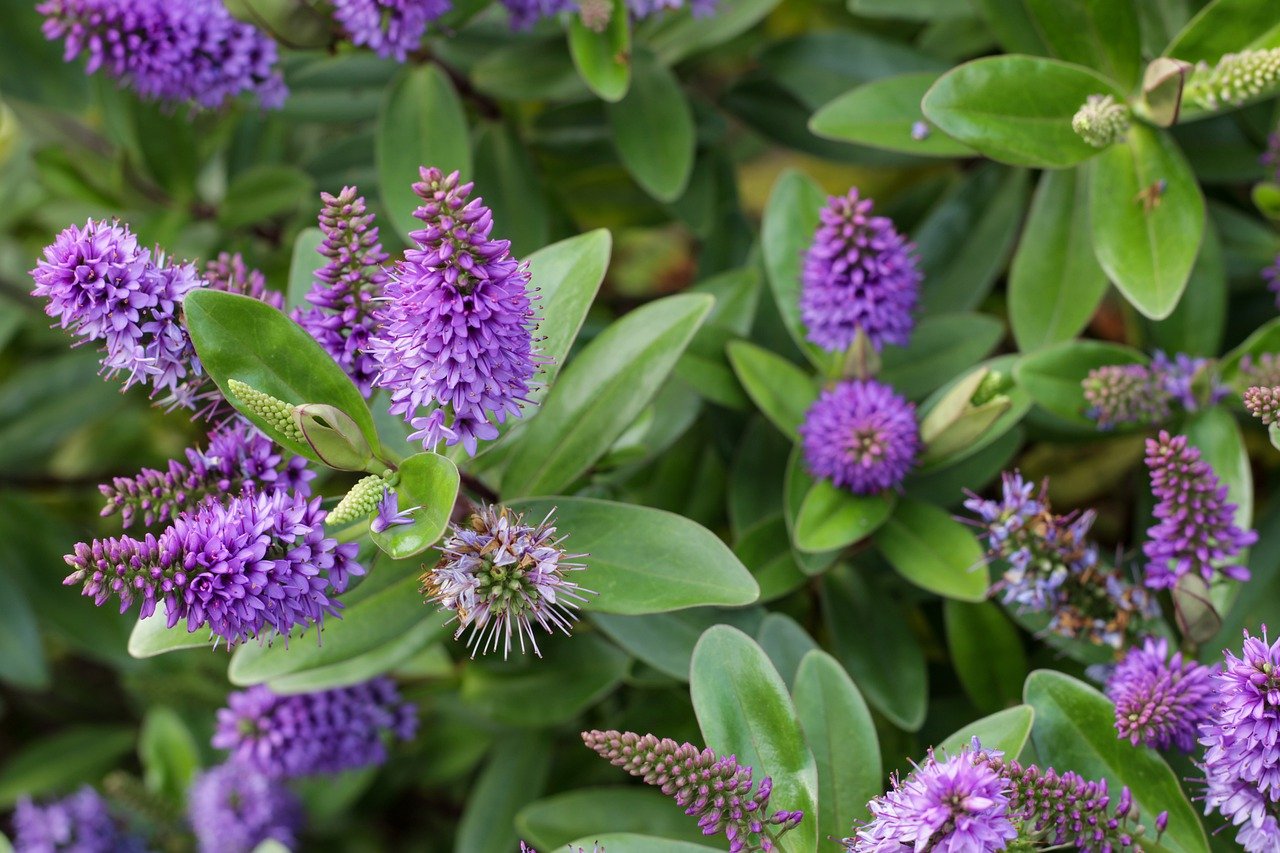
Understanding Sustainable Gardening
Sustainable gardening is not just a trend; it's a lifestyle choice that resonates with our growing awareness of environmental issues. At its core, sustainable gardening focuses on practices that maintain ecological balance, ensuring that our gardens thrive without depleting natural resources. Imagine a garden that not only looks beautiful but also contributes positively to the environment — that's the essence of sustainability!
When you embrace sustainable gardening, you're not just planting flowers or vegetables; you're engaging in a holistic approach that considers the entire ecosystem. This means understanding how your gardening practices impact the soil, water, air, and wildlife around you. Here are some key principles of sustainable gardening:
- Conservation: Use resources wisely and minimize waste.
- Biodiversity: Promote a variety of plants to support a range of wildlife.
- Soil Health: Focus on enriching the soil naturally, avoiding synthetic fertilizers.
- Water Management: Utilize efficient watering techniques to conserve water.
By incorporating these principles, you can create a thriving garden that benefits both you and the planet. For instance, consider the soil — it's the foundation of your garden. Healthy soil is teeming with life, from earthworms to beneficial microbes, which helps plants grow stronger and more resilient. Instead of relying on chemical fertilizers, think about composting as a natural way to enrich your soil. Not only does composting reduce waste, but it also adds vital nutrients back into the earth.
Furthermore, sustainable gardening encourages the use of native plants. These plants are adapted to your local environment and require less water and maintenance. They also provide essential habitats for local wildlife, helping to create a balanced ecosystem. When you choose native species, you’re not just beautifying your garden; you’re also supporting local pollinators and other beneficial insects that play a crucial role in our food systems.
Ultimately, sustainable gardening is about making informed choices that lead to a healthier planet. It’s like being part of a larger community that values and respects nature. So, as you embark on your gardening journey, remember that every small action counts. Whether it’s reducing plastic use, composting kitchen scraps, or choosing organic seeds, each decision contributes to a more sustainable future.

Choosing Native Plants
When stepping into the world of gardening, one of the most impactful choices you can make is selecting native plants. These are the superheroes of the gardening realm! Native plants are those that naturally occur in your region, which means they have adapted over countless generations to thrive in your local climate and soil conditions. By choosing native species, you're not just adding beauty to your garden; you're also making a significant contribution to the local ecosystem.
One of the biggest advantages of native plants is their low maintenance requirements. Unlike exotic species that may demand constant watering, fertilization, and pest control, native plants are accustomed to the local environment. This means they generally require less water and are more resistant to local pests and diseases. Imagine spending less time on upkeep and more time enjoying your flourishing garden! Plus, by reducing your reliance on chemical fertilizers and pesticides, you’re helping to create a healthier environment for both your plants and the wildlife that visits your garden.
Another compelling reason to choose native plants is their ability to enhance biodiversity. A garden filled with native species creates a welcoming habitat for local wildlife, including birds, butterflies, and beneficial insects. These creatures play vital roles in pollination and pest control, contributing to a balanced ecosystem. For instance, when you plant native flowers, you’re not just beautifying your space; you’re also providing food and shelter for pollinators. Imagine walking through a garden alive with the sound of buzzing bees and flitting butterflies—it's a magical experience!
Here’s a quick look at some popular native plants you might consider for your garden:
| Plant Name | Benefits | Ideal Conditions |
|---|---|---|
| Black-Eyed Susan | Attracts pollinators, drought-tolerant | Full sun, well-drained soil |
| Butterfly Milkweed | Supports monarch butterflies | Full sun, dry to medium soil |
| Eastern Red Cedar | Provides shelter for birds | Full sun to partial shade |
| Wild Bergamot | Attracts bees and butterflies | Full sun, moist soil |
Incorporating these native plants into your garden not only enhances its beauty but also fosters a sense of connection with the local environment. It's like inviting your neighbors—the birds, bees, and butterflies—to join your gardening adventure! So, the next time you’re at a nursery, consider asking about native plants. You’ll be surprised at the variety available and how they can transform your space into a vibrant, sustainable oasis.
In conclusion, choosing native plants is a win-win situation. You get a garden that’s not only stunning but also eco-friendly and low-maintenance. So why not take the plunge? Your garden—and the planet—will thank you!
- What are native plants? Native plants are species that naturally grow in a specific region without human intervention. They are adapted to the local climate and soil conditions.
- Why should I choose native plants for my garden? Native plants require less maintenance, are more resilient to local pests, and support local wildlife, enhancing biodiversity.
- How can I find native plants for my garden? Check with local nurseries, botanical gardens, or conservation organizations that specialize in native flora.
- Can native plants thrive in containers? Yes, many native plants can thrive in containers, making them a great option for small spaces.
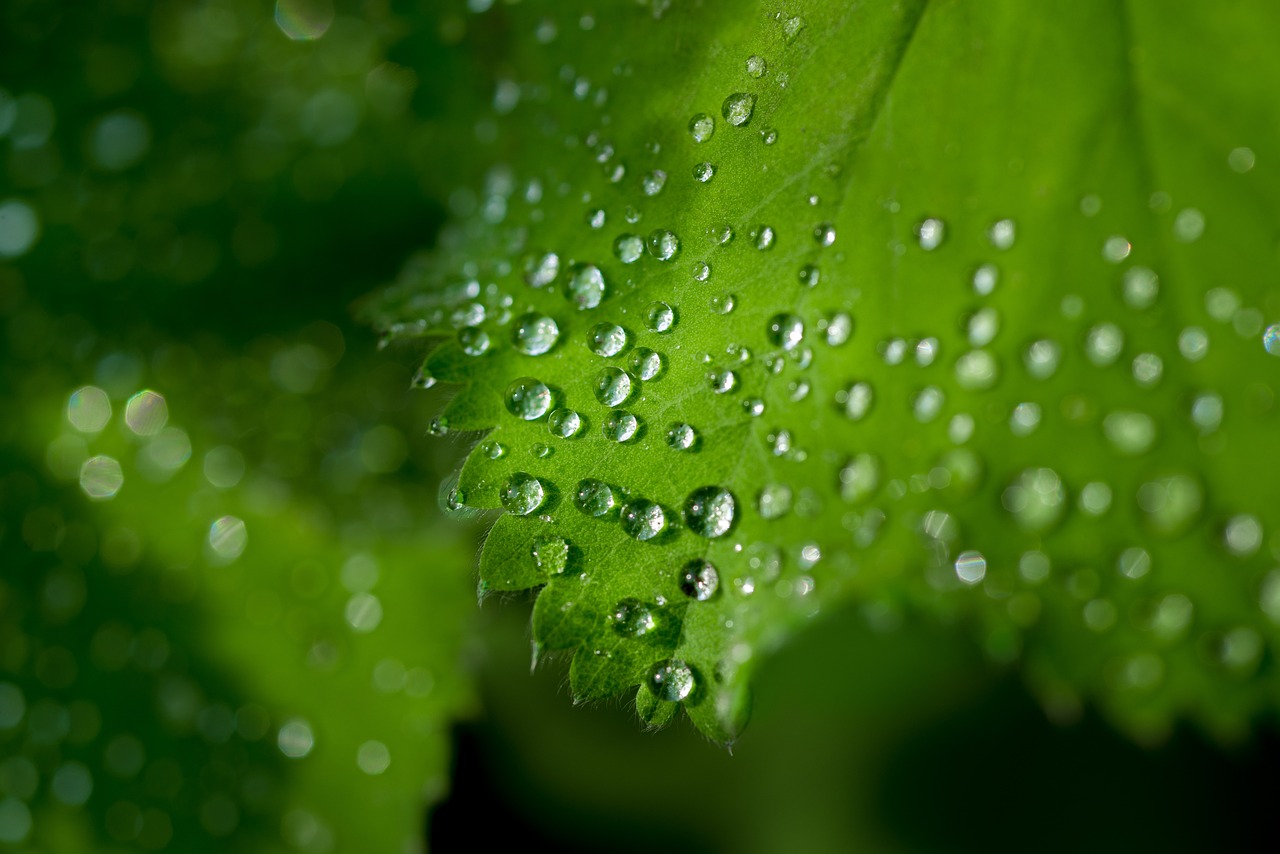
Benefits of Native Plants
When it comes to gardening, native plants are like the superheroes of the plant world. They are perfectly adapted to the local climate, soil, and wildlife, making them a sustainable choice for any garden. By choosing native species, you not only create a beautiful landscape but also contribute to the health of the local ecosystem. Imagine a garden that requires less water, fewer chemicals, and supports local wildlife—all thanks to the power of native plants!
One of the key benefits of incorporating native plants into your garden is their low maintenance nature. Unlike exotic plants that often struggle to thrive in unfamiliar environments, native plants are adapted to your region's specific conditions. This means they typically require less watering, less fertilization, and are more resilient to pests and diseases. As a result, you can spend less time worrying about your plants and more time enjoying your garden.
Moreover, native plants are essential for promoting biodiversity. They provide food and habitat for a variety of wildlife, including birds, bees, and butterflies. By planting native species, you’re essentially creating a haven for these creatures, which are crucial for pollination and maintaining a balanced ecosystem. For instance, native flowers often bloom at different times throughout the year, ensuring that there’s always something for pollinators to feast on.
Let’s take a closer look at some of the specific benefits of native plants:
- Water Conservation: Native plants are adapted to local rainfall patterns, requiring less irrigation once established. This not only saves water but also reduces your water bill!
- Soil Health: The deep root systems of many native plants help improve soil structure and prevent erosion, leading to healthier soil overall.
- Resilience: Native plants have evolved alongside local pests and diseases, making them more resistant to these threats compared to non-native species.
In addition to these benefits, native plants can also enhance the aesthetic appeal of your garden. With a wide variety of shapes, sizes, and colors, they can create a stunning visual display that changes with the seasons. Picture a vibrant garden filled with wildflowers in the spring, lush greenery in the summer, and stunning fall foliage—all without the need for chemical fertilizers or pesticides.
In summary, the benefits of native plants go far beyond mere aesthetics. They promote a healthier ecosystem, require less maintenance, and support local wildlife, making them an ideal choice for any eco-conscious gardener. So, why not embrace the beauty and resilience of native plants in your garden? Your plants, the environment, and the local wildlife will thank you!
Q: What are native plants?
A: Native plants are species that naturally occur in a specific region and have adapted to the local climate, soil, and wildlife over time.
Q: Why should I choose native plants for my garden?
A: Native plants require less maintenance, are more resilient to local pests, conserve water, and support local wildlife, making them a sustainable gardening choice.
Q: How can I find native plants for my garden?
A: You can find native plants at local nurseries, garden centers, or through native plant societies and organizations that focus on preserving local flora.
Q: Do native plants attract pollinators?
A: Yes! Native plants are crucial for attracting local pollinators like bees and butterflies, providing them with food and habitat.

Attracting Pollinators
Creating a garden that attracts pollinators is not just a way to enhance your garden's beauty; it's a vital step in supporting our ecosystem. Pollinators like bees, butterflies, and hummingbirds play a crucial role in the reproduction of many plants, including fruits and vegetables. Imagine your garden as a bustling marketplace, where these tiny workers are the customers, flitting from flower to flower, ensuring the success of your plants. But how do you make your garden a welcoming haven for these essential creatures?
First and foremost, it's essential to choose the right plants. Native flowers are particularly effective at attracting local pollinators because they provide the nectar and pollen that these insects have evolved to seek. Some excellent choices include:
- Black-eyed Susans - Bright and cheerful, these flowers are a favorite among bees.
- Milkweed - Not only does it attract butterflies, especially monarchs, but it also serves as a host plant for their larvae.
- Lavender - The sweet scent of lavender draws in bees and adds a lovely aroma to your garden.
Additionally, consider planting in clumps rather than scattering individual plants throughout your garden. Pollinators are more likely to visit a dense grouping of flowers than isolated blooms. Think of it as throwing a party; you want to create a vibrant atmosphere that invites guests to mingle! By clustering your plants, you make it easier for pollinators to find and access their food sources.
Another key aspect to consider is the blooming season. Aim for a variety of plants that flower at different times throughout the year. This ensures that there is always something blooming, providing a continuous food supply for pollinators. For example, early bloomers like crocuses can be paired with late bloomers like asters to create a season-long buffet.
Furthermore, avoid using pesticides and herbicides in your garden. These chemicals can be harmful to pollinators, often leading to their decline. Instead, explore natural pest control methods that won't disrupt the delicate balance of your garden ecosystem. Think of your garden as a community where every member, including pollinators, plays a vital role. Protecting them means protecting your plants and your garden's overall health.
Lastly, providing additional resources such as water sources and shelter can make your garden even more appealing to pollinators. A shallow dish filled with water and some pebbles can serve as a drinking station, while leaving some areas of your garden a little wild can create habitats for beneficial insects. By combining these elements, you create a thriving environment that not only supports pollinators but also enhances your gardening experience.
In summary, attracting pollinators to your garden is all about creating a welcoming environment that meets their needs. By selecting native plants, clustering blooms, ensuring a continuous supply of flowers, avoiding harmful chemicals, and providing additional resources, you can transform your garden into a vibrant ecosystem that supports these vital creatures.
1. What are the best plants to attract pollinators?
Some of the best plants include native flowers such as Black-eyed Susans, Milkweed, and Lavender. These provide the nectar and pollen that pollinators seek.
2. How can I create a pollinator-friendly garden?
To create a pollinator-friendly garden, plant in clusters, choose a variety of flowering plants that bloom at different times, and avoid using pesticides.
3. Do I need to provide water for pollinators?
Yes! Providing a shallow dish of water with pebbles can be a great way to offer hydration for pollinators visiting your garden.
4. How can I support pollinators in my urban garden?
Even in urban areas, you can support pollinators by planting native flowers, creating vertical gardens, and maintaining a small water source.
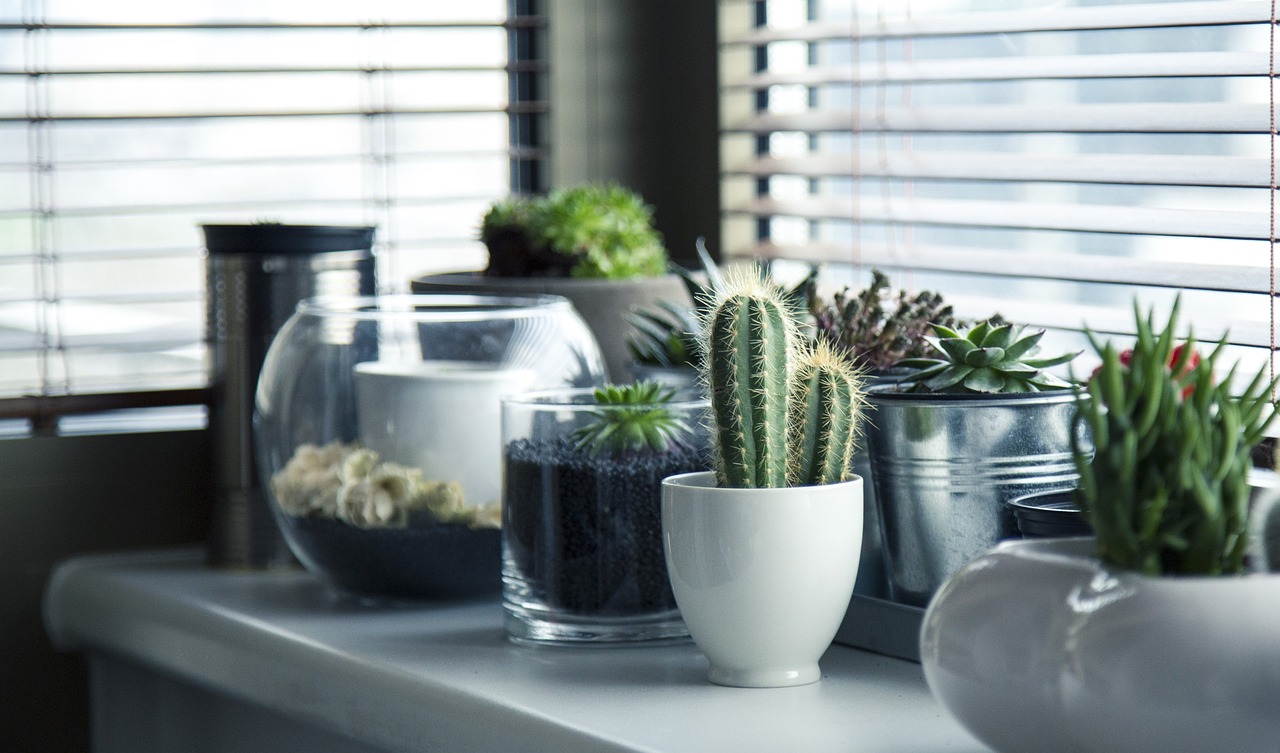
Water Conservation Techniques
Water conservation is not just a trend; it’s a necessity for every gardener looking to maintain a sustainable and eco-friendly garden. Imagine your garden flourishing while using less water—sounds like a dream, right? Well, it’s entirely possible with a few smart techniques! By adopting water-saving methods, you can ensure your plants thrive without draining the planet's precious resources.
One effective technique is rainwater harvesting. This method involves collecting rainwater from your roof and directing it into barrels or cisterns for later use. Not only does this practice reduce your reliance on municipal water, but it also helps in managing stormwater runoff. You can easily set up a rain barrel system; simply place a barrel under a downspout and let nature do the rest! A well-placed rain barrel can collect thousands of gallons of water over a single season, which is enough to keep your garden hydrated during dry spells.
Another fantastic way to conserve water is through drip irrigation. Unlike traditional sprinklers that waste water through evaporation and runoff, drip irrigation delivers water directly to the roots of your plants. This targeted approach minimizes water waste and promotes deep root growth, making your plants more resilient. You can set up a simple drip system with a timer to ensure your plants receive consistent moisture without overwatering.
Additionally, consider implementing mulching in your garden beds. Mulch acts as a protective layer over the soil, reducing evaporation and keeping the soil cool. Organic mulches, such as wood chips or straw, not only conserve moisture but also enrich the soil as they decompose. Think of mulch as a cozy blanket for your plants, helping them retain moisture while providing essential nutrients over time.
Finally, it’s crucial to be mindful of your watering schedule. Watering early in the morning or late in the evening can significantly reduce evaporation rates. If you’re unsure about when to water, consider using a soil moisture meter. This handy tool can help you determine when your plants truly need water, preventing unnecessary watering and ensuring your garden remains sustainable.
In summary, implementing these not only benefits your garden but also contributes to a healthier environment. By harvesting rainwater, utilizing drip irrigation, applying mulch, and being strategic about your watering schedule, you can create a thriving garden that respects our vital water resources.
- What is rainwater harvesting? Rainwater harvesting is the practice of collecting and storing rainwater for later use, such as watering your garden.
- How does drip irrigation work? Drip irrigation delivers water directly to the plant roots through a system of tubing and emitters, minimizing water waste.
- Why is mulching important? Mulching helps retain soil moisture, suppress weeds, and can improve soil health as it decomposes.
- When is the best time to water my garden? Early morning or late evening is the best time to water, as temperatures are cooler and evaporation rates are lower.
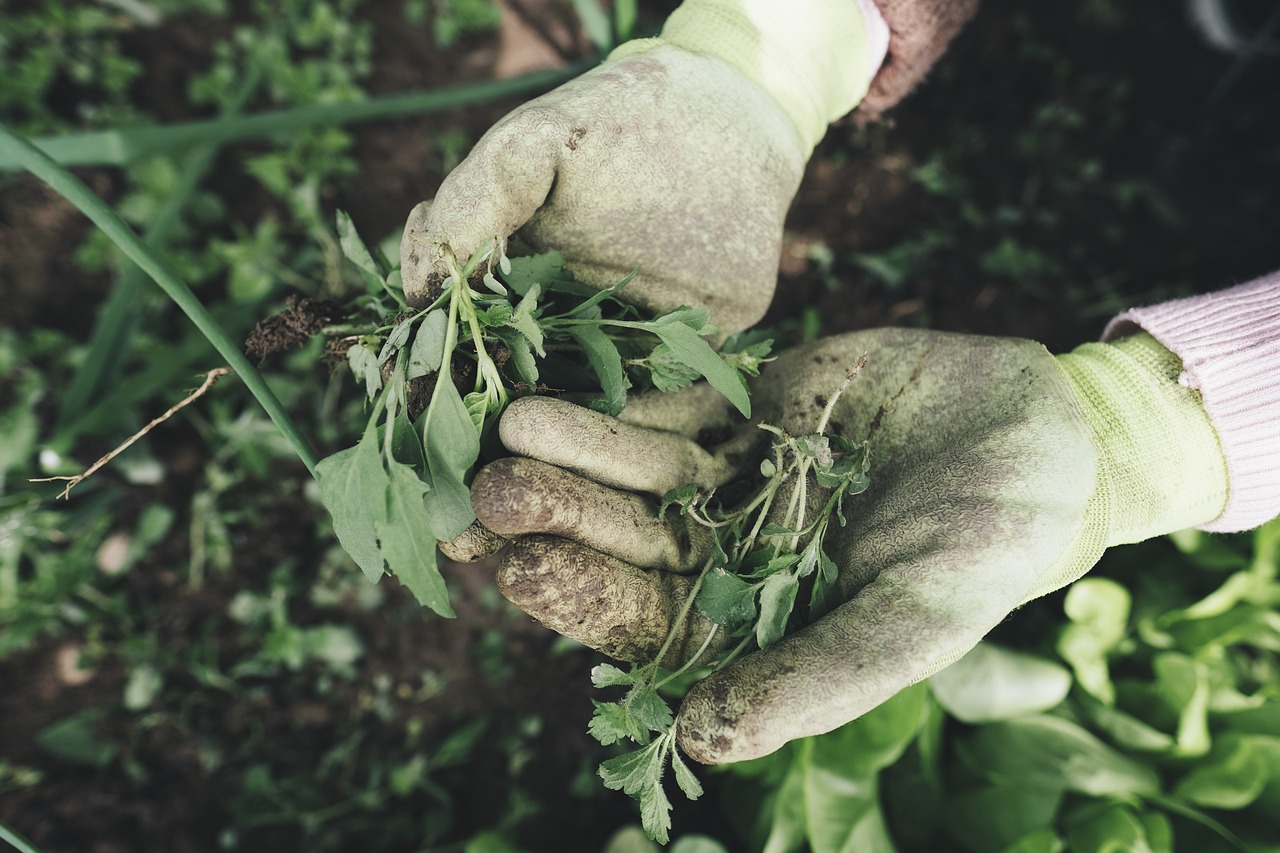
Soil Health and Composting
When it comes to gardening, soil health is the unsung hero that supports everything we love about our green spaces. Think of soil as the foundation of a house; without a solid base, the structure is bound to crumble. Healthy soil is teeming with life, rich in nutrients, and capable of retaining moisture, all of which are crucial for your plants to thrive. One of the most effective ways to enhance soil health is through composting, a natural process that recycles organic matter into a nutrient-rich amendment.
Composting is like giving your garden a superfood boost. It involves collecting kitchen scraps, yard waste, and other organic materials, and letting them decompose over time. When you add compost to your soil, you're not just enriching it; you're also improving its structure, aeration, and water retention capabilities. It’s a win-win situation! Plus, composting helps reduce waste that would otherwise end up in landfills, making it an eco-friendly choice.
To get started with composting, you can follow a few simple steps:
- Choose a compost bin: You can buy one or create a simple pile in your backyard.
- Add materials: Include a mix of 'greens' (like vegetable scraps and grass clippings) and 'browns' (such as dried leaves and cardboard).
- Turn the pile: Regularly aerate your compost by turning it to speed up the decomposition process.
- Monitor moisture: Your compost should be damp, like a wrung-out sponge, but not soggy.
As you compost, you’ll notice that the materials break down into a dark, crumbly substance called humus. This is the gold standard for soil amendment! When you mix it into your garden beds, you’ll see your plants flourish like never before. Not only does compost provide essential nutrients, but it also encourages beneficial microorganisms that help break down organic matter in the soil, creating a vibrant ecosystem.
To illustrate the benefits of composting, let’s take a quick look at how it compares to traditional fertilizers:
| Aspect | Composting | Traditional Fertilizers |
|---|---|---|
| Nutrient Release | Slow and steady, as needed by plants | Fast, which can lead to nutrient leaching |
| Soil Structure | Improves over time | May degrade soil structure |
| Environmental Impact | Reduces waste and promotes biodiversity | Can contribute to pollution and runoff |
In summary, nurturing your soil through composting is not just about feeding your plants; it's about fostering a healthy ecosystem that benefits the environment. So, grab those kitchen scraps and yard waste, and start composting today! Your garden (and the planet) will thank you.
Q: How long does it take for compost to be ready?
A: Compost can take anywhere from a few weeks to a few months to break down, depending on factors like temperature, moisture, and the materials used.
Q: Can I compost meat and dairy products?
A: It's best to avoid composting meat and dairy as they can attract pests and create odors. Stick to fruits, vegetables, and plant materials for best results.
Q: How often should I turn my compost?
A: Turning your compost every few weeks can help speed up the decomposition process, but it's not strictly necessary. Just ensure it remains aerated.
Q: Is store-bought compost better than homemade compost?
A: Homemade compost is often richer in nutrients and beneficial microorganisms than store-bought options, making it a great choice for your garden.
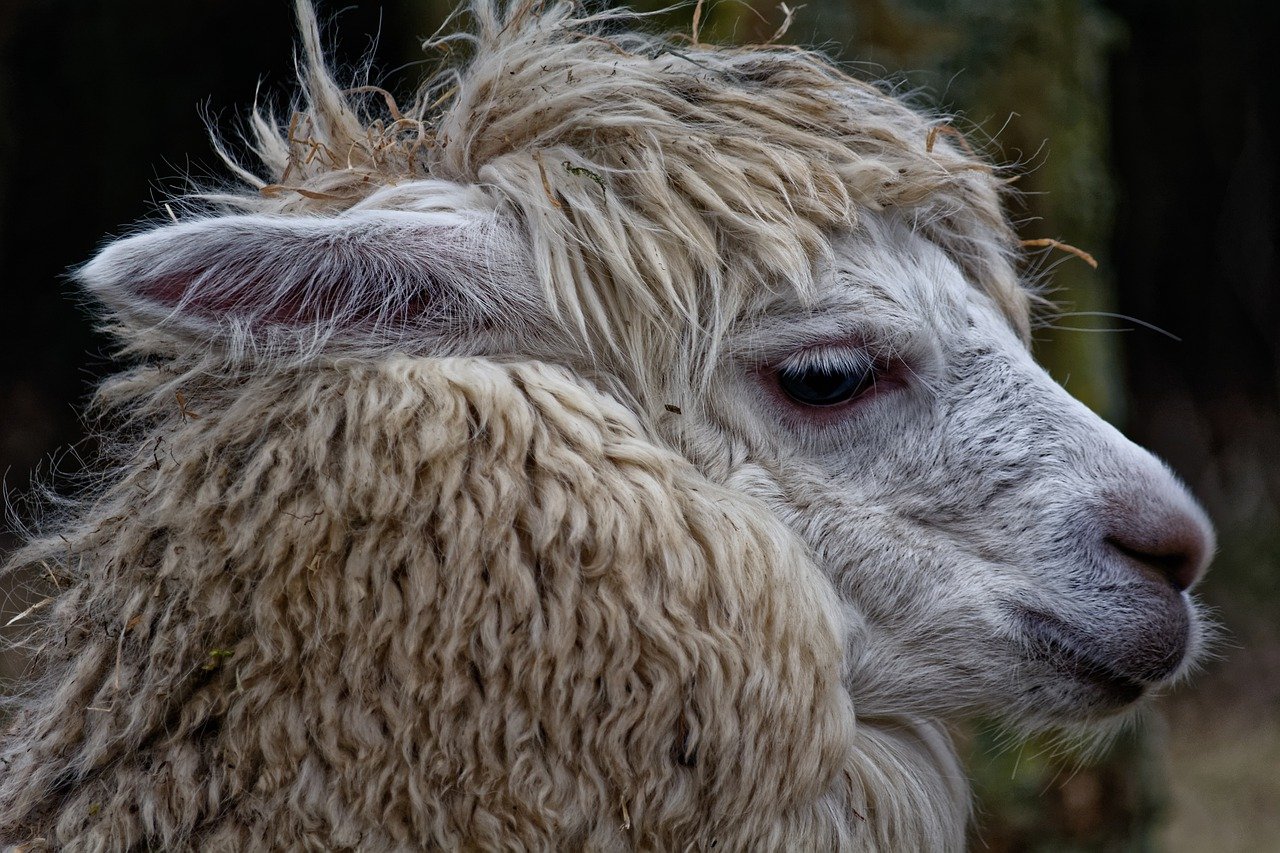
Organic Pest Management
When it comes to gardening, one of the biggest challenges you might face is dealing with pests. But fear not! provides a sustainable and eco-friendly approach to keeping your garden healthy and thriving. Instead of reaching for harsh chemicals that can harm the environment and disrupt the delicate balance of your garden's ecosystem, consider utilizing natural methods that are both effective and safe.
Organic pest management focuses on creating a balanced ecosystem where beneficial insects thrive and pests are kept at bay. This can be achieved through a variety of strategies. For instance, you can encourage natural predators such as ladybugs and lacewings, which feed on aphids and other common pests. By fostering a habitat that attracts these helpful insects, you can naturally reduce pest populations without resorting to chemical interventions.
Another effective technique is companion planting. This involves strategically placing different plants next to each other to enhance growth and deter pests. For example, planting marigolds near your vegetables can help repel nematodes and other unwanted insects. The idea here is simple: nature often provides us with the tools we need to maintain balance in our gardens.
Furthermore, utilizing natural pest deterrents can be a game changer. Substances like neem oil, garlic spray, and diatomaceous earth are excellent options for keeping pests at bay. These solutions work effectively while being gentle on the environment. For example, neem oil disrupts the life cycle of pests without harming beneficial insects, making it a fantastic choice for organic gardeners.
To give you a clearer picture of how these methods stack up against traditional chemical treatments, take a look at the following table:
| Method | Effectiveness | Environmental Impact |
|---|---|---|
| Neem Oil | High | Low |
| Garlic Spray | Moderate | Very Low |
| Diatomaceous Earth | High | Low |
| Chemical Pesticides | Very High | High |
By choosing organic methods, you not only protect your plants but also contribute to a healthier environment. It's like choosing to ride a bike instead of driving a car—both get you where you need to go, but one is much gentler on the planet. So, next time you spot those pesky aphids or caterpillars, remember that there are effective, organic solutions at your disposal!
In conclusion, organic pest management is not just about protecting your garden; it's about fostering a sustainable ecosystem that benefits all living things. By embracing these natural methods, you can cultivate a garden that is not only beautiful but also a haven for wildlife and beneficial insects. So roll up your sleeves and get ready to dive into the wonderful world of organic gardening!
- What are some common organic pest control methods? Some common methods include companion planting, using natural repellents like neem oil, and attracting beneficial insects.
- Are organic pest control methods effective? Yes! Many organic methods are highly effective and can provide long-term solutions without harming the environment.
- How can I attract beneficial insects to my garden? Planting native flowers, providing shelter, and avoiding chemical pesticides can help attract beneficial insects.
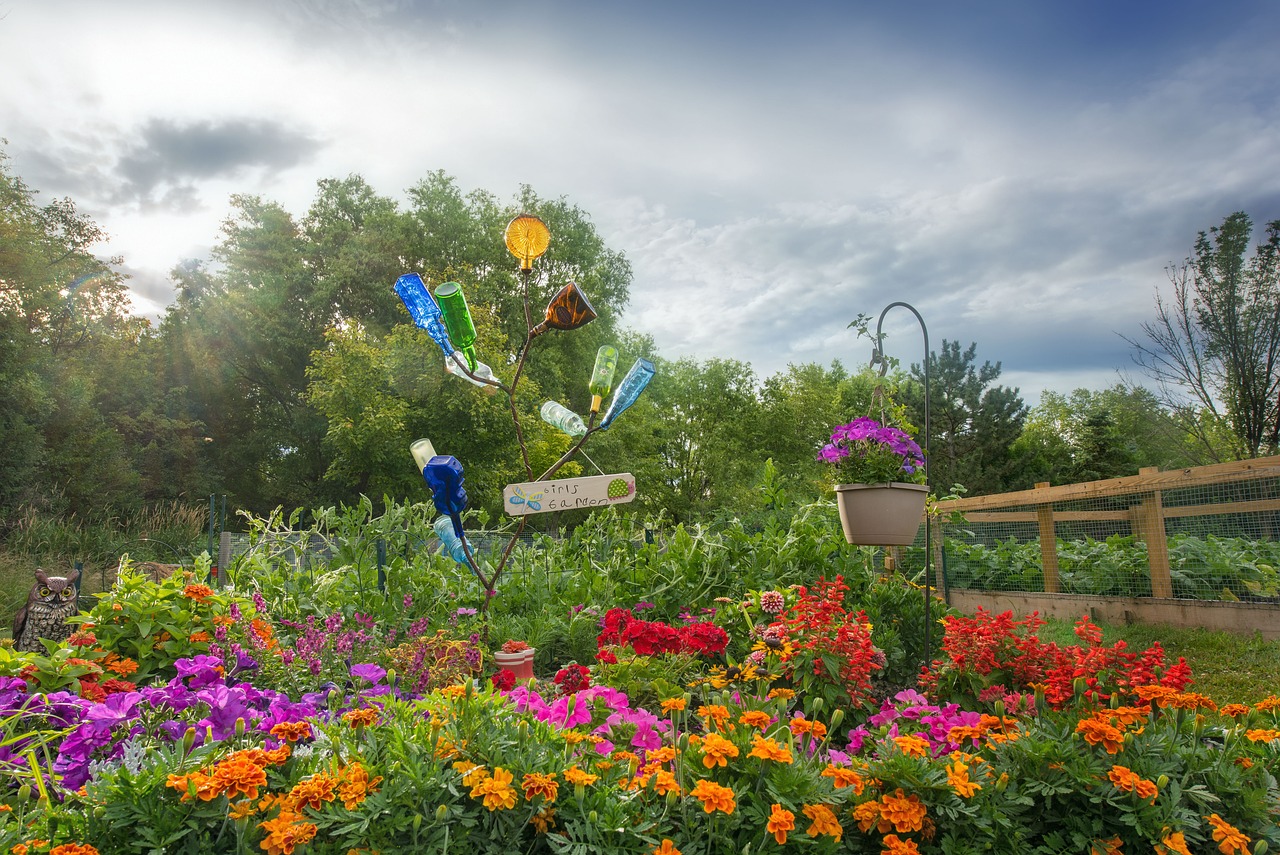
Companion Planting
Companion planting is like throwing a garden party where everyone gets along! Imagine your plants as guests; some are best friends that thrive together, while others might cause a ruckus. By understanding which plants work harmoniously, you can create a vibrant ecosystem in your garden that not only looks beautiful but also promotes healthier growth and pest management.
At its core, companion planting involves pairing different plants that can benefit each other. For example, when you plant tomatoes alongside basil, the basil can enhance the flavor of the tomatoes while also repelling pests that might otherwise munch on your prized crop. This is a fantastic way to minimize chemical use and keep your garden organic.
Here are some key benefits of companion planting:
- Pest Control: Certain plants can deter pests naturally. For instance, marigolds are known to repel nematodes and aphids, making them great companions for vegetables.
- Nutrient Sharing: Some plants, like legumes, can fix nitrogen in the soil, enriching it for neighboring plants that may need a nutrient boost.
- Space Utilization: By planting taller plants next to shorter ones, you can maximize your garden space and ensure that sunlight reaches every plant.
To illustrate the power of companion planting, let’s take a look at a simple table that pairs some common garden plants:
| Plant | Companion | Benefit |
|---|---|---|
| Tomatoes | Basil | Enhances flavor and repels pests |
| Carrots | Onions | Repels carrot flies and enhances growth |
| Cabbage | Mint | Repels cabbage moths |
| Peppers | Marigolds | Deters nematodes and attracts beneficial insects |
Implementing companion planting is not just about choosing the right pairs; it’s also about observing your garden and adapting to its needs. Every garden is unique, and the relationships between plants can vary based on factors like soil type, climate, and local pests. So, don’t be afraid to experiment! You might find that your garden flourishes with a little creativity and a willingness to learn.
In conclusion, companion planting is a simple yet effective way to enhance your garden’s ecosystem. By fostering relationships between plants, you can create a thriving environment that reduces pests, improves soil health, and maximizes space. So, why not give it a try? Your plants will thank you!
Q: What is companion planting?
A: Companion planting is the practice of growing different plants in close proximity for mutual benefits, such as pest control, nutrient sharing, and maximizing space.
Q: Can I plant any two plants together?
A: Not all plants get along! It’s important to research which plants are compatible and which may hinder each other’s growth.
Q: How do I know which plants to pair?
A: You can start by looking at traditional companion planting guides or experimenting with combinations in your garden to see what works best.
Q: Is companion planting suitable for all types of gardens?
A: Yes! Companion planting can be beneficial in vegetable gardens, flower gardens, and even container gardens.

Natural Pest Deterrents
When it comes to gardening, we all want our plants to thrive without the threat of pesky pests ruining our hard work. Luckily, there are numerous that can help keep your garden healthy and vibrant without resorting to harmful chemicals. Think of these solutions as the gentle guardians of your garden, ensuring that your plants remain safe while also protecting the environment.
One of the simplest and most effective natural deterrents is neem oil. Extracted from the seeds of the neem tree, this oil disrupts the life cycle of many common garden pests. It works by making it difficult for insects to feed and breed, ultimately keeping their populations in check. Just mix a few drops of neem oil with water and spray it on the affected plants. Not only is it effective against aphids and spider mites, but it's also safe for beneficial insects when used properly.
Another fantastic option is garlic spray. The pungent smell of garlic is a natural repellent for many insects. To create your own garlic spray, blend a few cloves of garlic with water, strain the mixture, and pour it into a spray bottle. Spraying this concoction on your plants can deter aphids, beetles, and even rabbits. Just make sure to reapply after rain to maintain its effectiveness.
Furthermore, herbs can serve as excellent natural pest deterrents. Plants like basil, mint, and rosemary not only enhance the flavor of your meals but also repel unwanted insects. For instance, planting basil near tomatoes can help keep aphids at bay, while mint can deter ants and beetles. This method is akin to having a protective army of plants that work together to fend off threats, enhancing the biodiversity of your garden.
Here’s a quick overview of some popular natural pest deterrents:
| Deterrent | Pests Controlled | Application Method |
|---|---|---|
| Neem Oil | Aphids, Spider Mites | Mix with water and spray |
| Garlic Spray | Aphids, Beetles, Rabbits | Blend garlic with water, strain, and spray |
| Basil | Aphids | Plant near tomatoes |
| Mint | Ants, Beetles | Plant around garden |
In addition to these methods, you can also explore the world of essential oils. Oils like peppermint, lavender, and eucalyptus have strong scents that many pests find unpleasant. They can be diluted in water and sprayed around the garden to create a fragrant barrier that keeps insects at bay.
Lastly, remember that creating a diverse ecosystem in your garden is one of the best ways to naturally deter pests. Introducing beneficial insects, such as ladybugs and lacewings, can help control pest populations without any additional effort on your part. These tiny allies will feast on aphids and other unwanted visitors, allowing your garden to flourish.
By employing these natural pest deterrents, you're not just protecting your plants; you're also contributing to a healthier environment. So, the next time you're faced with a pest problem, consider reaching for these eco-friendly solutions that are as effective as they are safe.
- What are natural pest deterrents? Natural pest deterrents are eco-friendly solutions used to repel pests without harmful chemicals, such as neem oil, garlic spray, and certain herbs.
- How often should I apply natural pest deterrents? It’s best to reapply after rain or every few weeks, depending on the specific product and pest pressure.
- Are natural pest deterrents safe for pets and children? Yes, most natural pest deterrents are safe for pets and children, but it's always wise to check specific product guidelines.
- Can I combine different natural pest deterrents? Absolutely! Many gardeners find success by combining methods for a more robust defense against pests.

Creating a Wildlife Habitat
Transforming your garden into a wildlife habitat is not just a delightful endeavor; it’s a vital contribution to our planet’s health. By making your garden a haven for various species, you’re promoting biodiversity and ensuring that local wildlife has the resources they need to thrive. Imagine your garden as a bustling community where birds chirp, butterflies flutter, and beneficial insects buzz around. This vibrant ecosystem not only enhances the beauty of your space but also plays a crucial role in maintaining ecological balance.
To create an inviting wildlife habitat, consider incorporating a variety of elements that cater to different species. For instance, you can plant a diverse range of native plants that provide food and shelter. Native plants are adapted to your local climate, making them easier to maintain and more appealing to local wildlife. Additionally, creating water sources, such as small ponds or bird baths, can attract birds and other creatures that need hydration. A well-placed water feature can turn your garden into a refreshing oasis.
Another essential aspect is to provide shelter. Birds, for example, appreciate birdhouses and feeders that offer safe nesting spots and easy access to food. You can easily build simple birdhouses using wood scraps or repurpose old containers. When placing these structures, think about the types of birds you want to attract; different species have varying preferences for nesting sites. Furthermore, consider adding insect hotels to your garden. These small structures provide safe havens for beneficial insects like ladybugs and solitary bees, which are crucial for pollination and pest control.
Creating a wildlife-friendly garden is not limited to just plants and structures; it also involves eliminating harmful practices. Avoid using pesticides and herbicides, as these chemicals can harm the very wildlife you’re trying to attract. Instead, embrace organic gardening methods that promote natural pest control. Your garden can flourish without the use of harmful chemicals, allowing the ecosystem to thrive naturally. Think of your garden as a mini nature reserve, where every plant and creature plays a role in the larger picture of environmental health.
To sum it up, creating a wildlife habitat in your garden is about more than just aesthetics; it’s about fostering a thriving ecosystem. By planting native species, providing water sources, and building shelters, you can invite a variety of wildlife into your space. Remember, every small action counts in the fight for biodiversity. So, roll up your sleeves and get started on this rewarding journey towards creating a sanctuary for our furry and feathered friends!
- What types of plants should I include to attract wildlife? Choose native plants that provide food and shelter for local wildlife, such as flowering plants for pollinators and shrubs for birds.
- How can I create a water source for wildlife? Simple solutions include bird baths, small ponds, or even a shallow dish filled with water placed in a safe area.
- Are there specific features I should add for insects? Consider building insect hotels or leaving some areas of your garden wild to provide natural habitats.
- How do I manage pests without chemicals? Implement organic pest control methods, such as companion planting and using natural deterrents like neem oil.
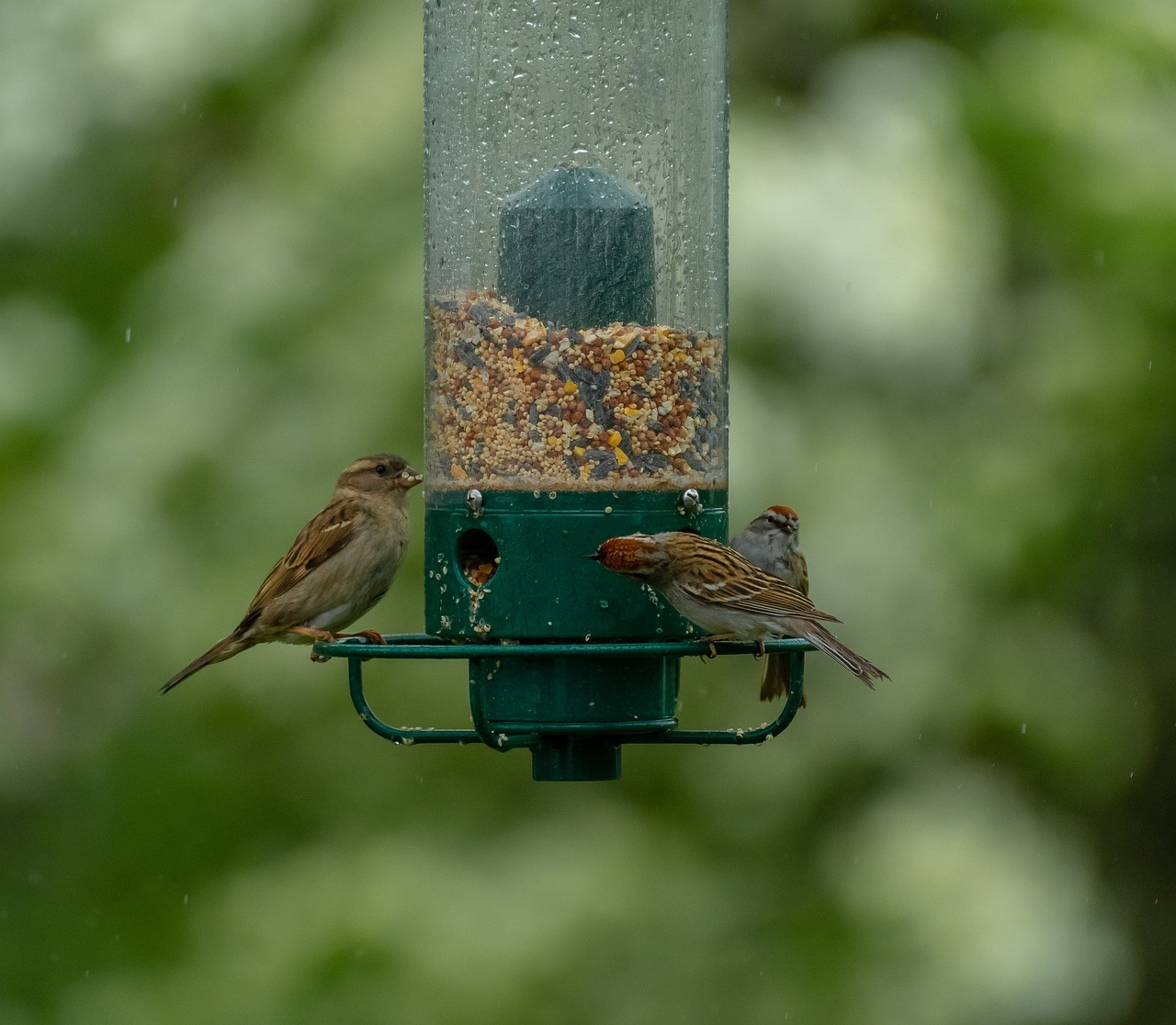
Building Birdhouses and Feeders
Creating birdhouses and feeders in your garden is not just a delightful project; it’s a fantastic way to invite nature right into your backyard. Imagine waking up to the cheerful chirping of birds as they flit about your garden, adding life and color to your outdoor space. Building birdhouses and feeders can be a rewarding experience, and it’s easier than you might think! The best part? You’re providing essential habitats and food sources for our feathered friends, which is crucial for maintaining biodiversity.
When designing your birdhouses, consider the needs of the birds in your area. Different species have varying preferences for nesting sites, so it’s important to create houses that cater to these needs. For example, bluebirds prefer open fields and require a house with a 1.5-inch entrance hole, while wrens enjoy more secluded areas and need a smaller entrance. To help you get started, here’s a simple table outlining some popular bird species and their nesting preferences:
| Bird Species | Entrance Hole Size | Nesting Height |
|---|---|---|
| Bluebird | 1.5 inches | 4-6 feet |
| Wren | 1 inch | 3-10 feet |
| Chickadee | 1.25 inches | 5-15 feet |
| House Sparrow | 1.5 inches | 5-10 feet |
Once you’ve decided on the type of birdhouse to construct, gather your materials. You’ll need untreated wood, nails, and wood glue. It’s crucial to avoid treated wood, as it can be harmful to birds. You can find many free plans online that guide you through the building process step-by-step. Remember to include ventilation holes and drainage holes in your design to keep the interior dry and comfortable for the birds.
As for feeders, they can be as simple or as elaborate as you like. A basic platform feeder can be constructed with a few pieces of wood and some screws, while tube feeders can offer a more sophisticated feeding option for smaller birds. Fill your feeders with a variety of seeds, such as sunflower seeds, millet, and safflower, to attract a diverse range of birds. Just like with birdhouses, placement is key; situate your feeders near natural cover, such as bushes or trees, to provide safety for the birds.
Maintaining your birdhouses and feeders is just as important as building them. Regularly clean out the houses after the nesting season to prevent the spread of disease and make them inviting for new families. Additionally, keep your feeders clean and refill them regularly to ensure that the birds have a reliable food source. By doing this, you’re not just creating a sanctuary for birds; you’re also enhancing the overall health of your garden ecosystem.
In conclusion, building birdhouses and feeders is a fulfilling way to engage with nature while contributing positively to your local environment. You’ll not only enjoy the beauty of birds in your garden but also play a vital role in supporting their populations. So grab your tools, get creative, and let your garden become a haven for our feathered friends!
- What materials are best for building birdhouses? Untreated wood is the safest choice for birdhouses, as treated wood can contain harmful chemicals.
- How often should I clean my birdhouses? It's best to clean them once the nesting season is over, typically in late summer or early fall.
- What type of bird feeder attracts the most birds? Tube feeders filled with mixed seeds are great for attracting a variety of small birds.

Creating Shelter for Beneficial Insects
Creating a welcoming environment for beneficial insects is an essential aspect of eco-friendly gardening. These tiny allies play a crucial role in pollination and pest control, making your garden healthier and more vibrant. But how do you go about providing shelter for these helpful creatures? Think of your garden as a cozy neighborhood where every insect has its own home. By incorporating various structures and features, you can attract beneficial insects such as ladybugs, lacewings, and solitary bees.
One effective way to create shelter is by adding insect hotels. These structures can be as simple as a bundle of twigs or as elaborate as a multi-chambered wooden box filled with different materials. The idea is to mimic natural habitats where insects can find refuge. For example, you can use:
- Wooden blocks with drilled holes for solitary bees.
- Straw or dried leaves for ladybugs and other beneficial insects.
- Hollow stems from plants like bamboo to provide nesting sites.
Additionally, consider planting a variety of flowers that bloom at different times throughout the growing season. This ensures that there’s always food available for your insect friends. Native plants are particularly beneficial as they attract local pollinators and provide the right habitat. Some great options include:
| Plant Name | Type of Beneficial Insect Attracted |
|---|---|
| Echinacea (Coneflower) | Bees and butterflies |
| Lavender | Bees and beneficial wasps |
| Milkweed | Monarch butterflies |
Another way to enhance your garden’s appeal to beneficial insects is by leaving some areas a bit wild. This means allowing a section of your garden to grow naturally without constant pruning or mowing. Overgrown areas can serve as habitats for various insects, providing them with the shelter they need to thrive. It’s like creating a small wildlife sanctuary right in your backyard!
Finally, remember that water is essential for all life forms, including insects. Consider adding a shallow water dish with stones or pebbles for insects to land on. This simple addition will provide a safe drinking spot for your beneficial allies, ensuring they remain hydrated and active in your garden. By creating a diverse and inviting environment, you not only support beneficial insects but also contribute to a balanced ecosystem that enhances your gardening experience.
Q: What types of beneficial insects should I attract to my garden?
A: Aim to attract a variety of beneficial insects such as ladybugs, lacewings, bees, and predatory wasps. Each of these insects plays a unique role in pest control and pollination.
Q: How can I tell if my garden is attracting beneficial insects?
A: Look for signs like increased pollination, a reduction in harmful pests, and the presence of these insects themselves. You may also notice more flowers setting fruit as a result of their pollination efforts.
Q: Do I need to use chemicals if I have beneficial insects in my garden?
A: It's best to avoid chemicals altogether as they can harm beneficial insects. Instead, focus on organic pest control methods to protect both your plants and the insects that help maintain your garden's health.

Seasonal Gardening Practices
Gardening is not just a hobby; it’s a rhythm that dances to the tune of the seasons. Understanding how to adapt your gardening practices to these seasonal changes is crucial for maintaining an eco-friendly garden. Each season brings its own set of challenges and opportunities, and by tuning in to these natural cycles, you can ensure that your garden thrives all year round. The beauty of seasonal gardening lies in its ability to harmonize with nature, allowing you to cultivate a vibrant ecosystem right in your backyard.
In the spring, the world awakens from its winter slumber, and this is the perfect time to start planting. The soil is warming up, and the days are getting longer. It's crucial to prepare your garden for this vibrant season. Start by assessing your soil health; adding compost can boost nutrient levels and improve soil structure. When planting, consider starting seeds indoors to give them a head start. This way, when the last frost has passed, you can transplant them into your garden, ensuring they have the best chance to flourish. Remember to choose plants that are suited to your local climate and soil conditions, as this will reduce the need for excessive watering and maintenance.
As we transition into summer, the heat can be both a friend and a foe. While the sun encourages growth, it can also lead to water stress for your plants. Implementing water conservation techniques becomes essential. Techniques like drip irrigation can deliver moisture directly to the roots, minimizing evaporation. Additionally, consider mulching around your plants to retain moisture and suppress weeds. Summer is also a great time to observe your garden; take note of which plants are thriving and which ones might need a little extra care. This is the season to enjoy the fruits of your labor, so don’t forget to take time to relax and appreciate your blooming oasis.
As the leaves turn and we move into fall, it's time to prepare your garden for winter. Fall maintenance is crucial for ensuring the health of your garden throughout the colder months. Begin by cleaning up fallen leaves and debris, which can harbor pests and diseases. Mulching is a fantastic way to protect your soil and plants from the harsh winter conditions. It helps insulate the roots and adds organic matter as it breaks down. You might also consider planting cover crops, which can improve soil health and prevent erosion during the winter months. These crops will enrich the soil and prepare it for spring planting.
Finally, in the depths of winter, while it may seem like gardening is on hold, there are still plenty of tasks to keep you busy. This is the perfect time for planning and dreaming about your next garden. Take stock of your gardening tools and make any necessary repairs. You can also start seeds indoors for early spring planting. Additionally, creating a wildlife habitat is a wonderful winter project; consider building birdhouses or setting up feeders to attract local birds, which can help control pests in your garden come spring.
By following these seasonal practices, you can create a garden that not only flourishes but also supports the environment. Remember, gardening is a journey, and each season brings new lessons and rewards. Embrace the changes, and watch your garden blossom into a sanctuary of life.
- What are the best plants to grow in spring? Spring is ideal for planting a variety of vegetables like tomatoes, peppers, and leafy greens, as well as flowers such as pansies and petunias.
- How can I conserve water in my garden during summer? Use drip irrigation, mulch around your plants, and water early in the morning or late in the evening to reduce evaporation.
- What should I do to prepare my garden for winter? Clean up debris, mulch your plants, and consider planting cover crops to protect and enrich your soil.
- How can I attract wildlife to my garden? Build birdhouses, set up feeders, and create sheltered spaces for beneficial insects to thrive.
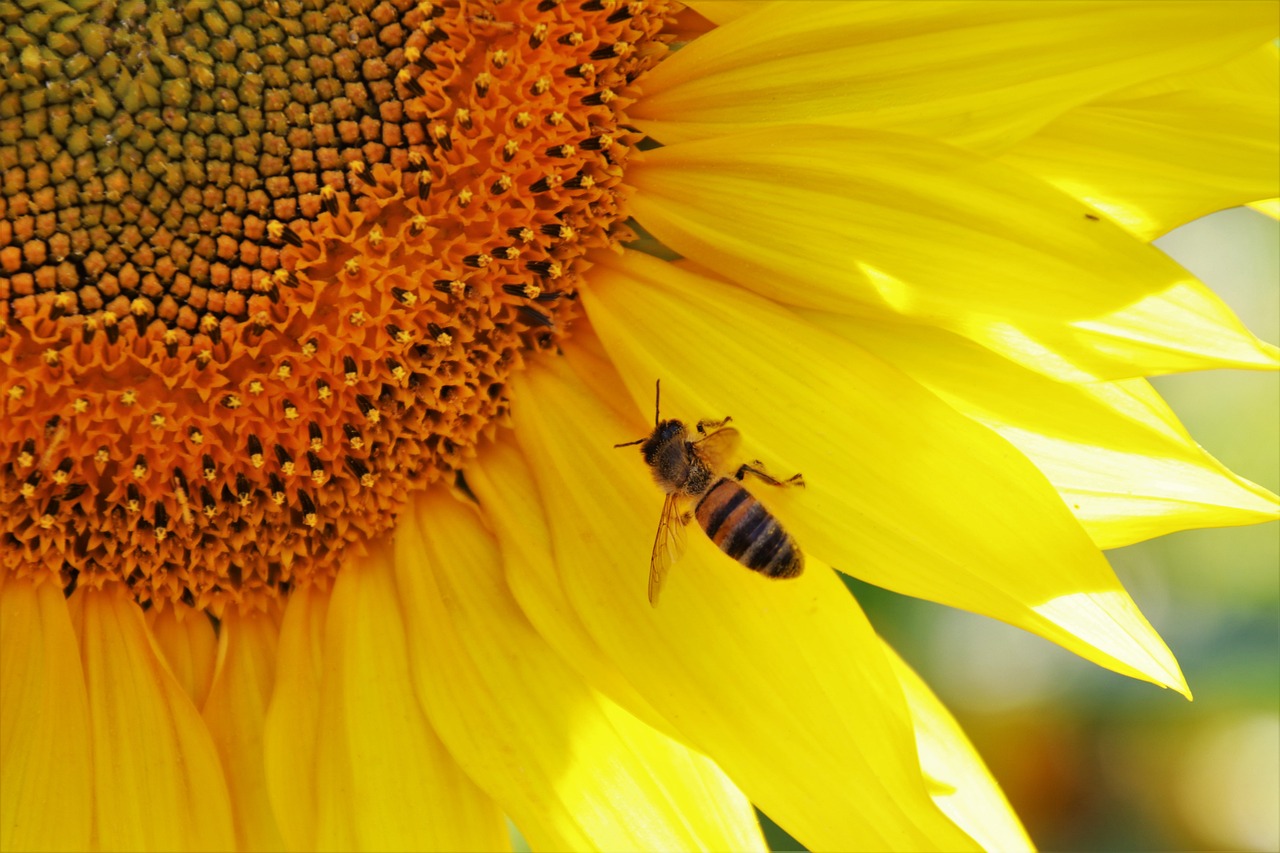
Spring Planting Tips
Spring is like the grand opening of the gardening season, where everything comes alive after a long winter slumber. As a novice gardener, you might be wondering how to make the most of this vibrant time. The key is to prepare, plant, and nurture your garden effectively. Start by assessing your soil; it’s the foundation of your garden. A simple soil test can reveal its pH and nutrient levels, helping you understand what amendments might be necessary. If your soil is lacking, consider adding organic matter like compost, which not only enriches the soil but also improves its structure, making it easier for roots to grow.
Once your soil is ready, it’s time to think about what to plant. Choose seeds or seedlings that are appropriate for your local climate and growing zone. For example, if you’re in a warmer area, you might want to start with tomatoes, peppers, and squash, while cooler regions could favor peas, lettuce, and radishes. Check your local planting calendar to ensure you’re planting at the right time. It’s like knowing the best time to catch a wave; timing is everything!
When planting, pay attention to the spacing of your seeds or seedlings. Crowding can lead to competition for nutrients and water, which can stunt growth. A general rule of thumb is to follow the instructions on the seed packet. If you’re unsure, a good practice is to space plants according to their mature size; this will help avoid overcrowding and promote healthy air circulation. Additionally, consider planting in raised beds or using containers if you have limited space. These options not only enhance drainage but also allow you to control soil quality more easily.
Watering is crucial during the spring months, especially as new plants establish their roots. Aim to water deeply but infrequently, encouraging plants to develop a robust root system that can withstand dry spells later in the season. Early morning is the best time to water, as it reduces evaporation and allows plants to absorb moisture before the heat of the day kicks in.
As your plants grow, keep an eye out for any signs of pests or diseases. Early detection is key to managing issues before they escalate. You can use natural pest deterrents, such as a simple garlic spray, to keep unwanted visitors at bay. Remember, a healthy garden is a happy garden!
Finally, don’t forget to enjoy the process! Gardening is not just about the end result; it’s about the journey. Take time to appreciate the little things, like the sound of bees buzzing or the sight of new leaves unfurling. Your garden is a living ecosystem, and every season brings new surprises.
- When is the best time to start planting in spring? It depends on your local climate, but generally, after the last frost date is a good guideline.
- What should I plant in early spring? Cool-season crops like peas, lettuce, and radishes are great choices for early spring planting.
- How often should I water my new plants? Water deeply but less frequently to encourage deep root growth, typically 1-2 times a week.
- Can I start seeds indoors? Absolutely! Starting seeds indoors can give you a head start on the growing season.

Fall Preparation Techniques
As the vibrant hues of summer fade and the crisp air of autumn settles in, it's time to think about how to prepare your garden for the colder months ahead. Fall preparation is not just about cleaning up; it's a vital step to ensure your garden thrives come spring. Think of it as tucking your plants in for a cozy winter nap! Here are some essential techniques to consider:
One of the first steps in your fall preparation is mulching. Applying a thick layer of organic mulch, such as shredded leaves or straw, can help insulate the soil, regulate temperature, and retain moisture. This is particularly important as temperatures drop, as it protects plant roots from freezing and thawing cycles. Just imagine your plants snuggled under a warm blanket—this is what mulch does for them!
Next, consider soil amendment. Fall is the perfect time to enrich your soil with compost or well-rotted manure. As you add these organic materials, they will break down over the winter, enriching the soil and improving its structure. Healthy soil is like a well-balanced diet for your plants, providing them with the nutrients they need to flourish.
Another essential technique is to clean up your garden. Remove any dead or diseased plants, as they can harbor pests and diseases that may linger and affect your garden in the spring. Don't forget to cut back perennials and prune back any overgrown shrubs. This not only tidies up your garden but also allows for better air circulation, which is crucial during the moist winter months.
It’s also important to plant cover crops in the fall. These crops, such as clover or rye, improve soil health by preventing erosion, suppressing weeds, and enhancing soil fertility. They act like a protective shield for your garden bed, ensuring that when spring arrives, your soil is ready to support new growth. Additionally, these cover crops can be turned into the soil before planting in the spring, enriching it with nutrients.
Finally, consider preparing your tools and equipment for winter storage. Clean your tools, sharpen blades, and store them in a dry place to prevent rusting. Think of your gardening tools as your trusty sidekicks; giving them a little TLC now will ensure they’re ready to help you tackle the garden next season.
In summary, fall preparation techniques are crucial for maintaining a healthy and vibrant garden. By mulching, amending the soil, cleaning up, planting cover crops, and caring for your tools, you're setting the stage for a successful spring. So, roll up your sleeves, get out there, and give your garden the care it deserves before the winter chill sets in!
- Why is fall preparation important for my garden? Fall preparation is essential as it helps protect plants from harsh winter conditions, enriches the soil, and prevents pest and disease issues in the spring.
- What types of mulch are best for winter protection? Organic mulches like shredded leaves, straw, or wood chips are excellent choices as they provide insulation and improve soil health as they decompose.
- Can I plant cover crops in my garden? Yes! Cover crops like clover or rye can be planted in the fall to prevent soil erosion and enhance soil fertility.
- How do I clean and store my gardening tools? Clean your tools with soapy water, dry them thoroughly, sharpen any blades, and store them in a dry location to prevent rust.
Frequently Asked Questions
- What is sustainable gardening?
Sustainable gardening is all about creating a garden that maintains ecological balance. It promotes practices that benefit the environment, such as using organic methods, conserving water, and enhancing biodiversity. By focusing on sustainability, you can grow a beautiful garden while protecting our planet.
- Why should I choose native plants for my garden?
Native plants are adapted to your local climate, making them easier to grow and maintain. They require less water, are more resistant to pests, and support local wildlife, including pollinators. Incorporating native species can enhance the biodiversity of your garden and contribute to a healthier ecosystem.
- How can I attract pollinators to my garden?
To attract pollinators like bees and butterflies, plant a variety of native flowers that bloom at different times throughout the season. Create a pollinator-friendly space by avoiding pesticides and providing water sources. You’ll be amazed at how quickly your garden buzzes with life!
- What are some effective water conservation techniques?
Implementing water-saving strategies is crucial for sustainable gardening. Consider using rainwater harvesting systems, drip irrigation, and mulching to retain moisture in the soil. These methods not only conserve water but also keep your plants healthy and thriving.
- How does composting improve soil health?
Composting enriches your soil by adding essential nutrients and improving its structure. It helps retain moisture and encourages beneficial microorganisms, which are vital for plant growth. Plus, composting reduces waste by recycling kitchen scraps and yard debris!
- What are some natural pest management techniques?
Managing pests organically can be achieved through methods like companion planting, which involves growing plants together that benefit each other. You can also use natural deterrents like neem oil or garlic spray to keep pests at bay without harming the environment.
- How can I create a wildlife habitat in my garden?
Transforming your garden into a wildlife habitat is easier than you think! Start by planting native species, adding birdhouses and feeders, and creating shelter for beneficial insects. These simple additions will attract a variety of wildlife, enriching your garden's ecosystem.
- What should I do for my garden in the spring?
Spring is the perfect time to get your garden ready! Start by preparing your soil, planting seeds, and nurturing young plants. It's also a great time to assess any damage from winter and make necessary adjustments to ensure a flourishing garden.
- How can I prepare my garden for winter?
Preparing your garden for winter is essential for its health in the next growing season. Focus on mulching to protect the soil, amend it with compost, and tidy up any dead plants. These practices help insulate your garden and ensure it emerges strong come spring!



















